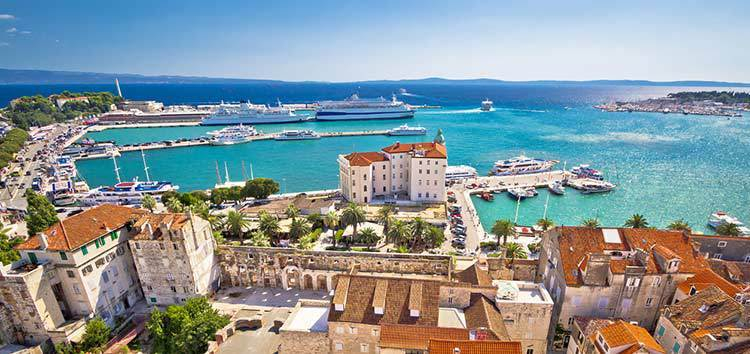The FINANCIAL — The coronavirus pandemic has hit the global tourism industry particularly hard. Covid-19 will change tourism, but will not end it. The human desire to explore will remain insatiable. One of the lessons to draw from the current crisis is how to meet this demand sustainably, finding the right balance between preservation and the creation of new opportunities.
This balance is the goal of a new strategic regeneration plan for Split, often called “the pearl of the Eastern Adriatic” and Croatia’s second-largest city as well as the largest city in the southern province of Dalmatia, with almost 180,000 inhabitants and 300,000 in the wider agglomeration. Tourism is the main engine of the local economy, with Split also serving as a hub for travel to many islands off the Dalmatian coast, while traditional industries such as shipbuilding are facing challenging transitions.
The urban regeneration plan for Split will radically transform this city on the Adriatic with a redesign of the vital port area and the development of the Kopilica district. The project will allow Split to fully exploit its huge potential, inspired by successful precursors in cities such as Barcelona, Copenhagen and London where disused rail and maritime sites have become vibrant new quarters for working and living.
The strategic plan, developed by the Austrian civil engineers iC Consulenten and funded by the European Bank for Reconstruction and Development with €600,000, focuses on the site of the main train station at the port and a large urban quarter in Kopilica on the north bank of the Split peninsula. The plan defines ways to reduce inner-city congestion while regenerating core urban locations such as the main station and a potentially expanded city centre.
The development of the port area and Kopilica district will create a potential gross floor area of around 1.2 million m2 for around 15,000 residents and generate 10-15,000 jobs. With the revitalisation of the main station and a new road tunnel at the port, cultural and convention venues and hotel facilities can be developed.
For the Kopilica district, an expansion of the inner-city area is foreseen to include offices, a university, large residential areas, and a citywide and tourist-friendly park-and-ride system.
Meeting these objectives will require major new infrastructure. A light rail track to the airport and a motorway bridge over the bay from Solin to Kopilica will be essential prerequisites for this development.
The EBRD is supporting the plan as part of its wider activities in urban regeneration, an integrated approach to tackling the challenges that many cities face in the Bank’s regions. In Croatia the Bank is also involved in projects in Pula, Šibenik and Zagreb. Urban regeneration offers opportunities to rebalance the economy, attract foreign investment and effectively deploy EU funds. Because central government has a key role in unlocking these investments, the EBRD is working closely with authorities and state companies at all levels to support the implementation of ambitious plans, which will transform major cities in Croatia.
Split is home to the palace of the Roman emperor Diocletian, built at the turn of the fourth century and today a UNESCO world heritage site. Later Split became a Byzantine city, before falling under Venetian rule. The EBRD-sponsored strategic regeneration pla































Discussion about this post